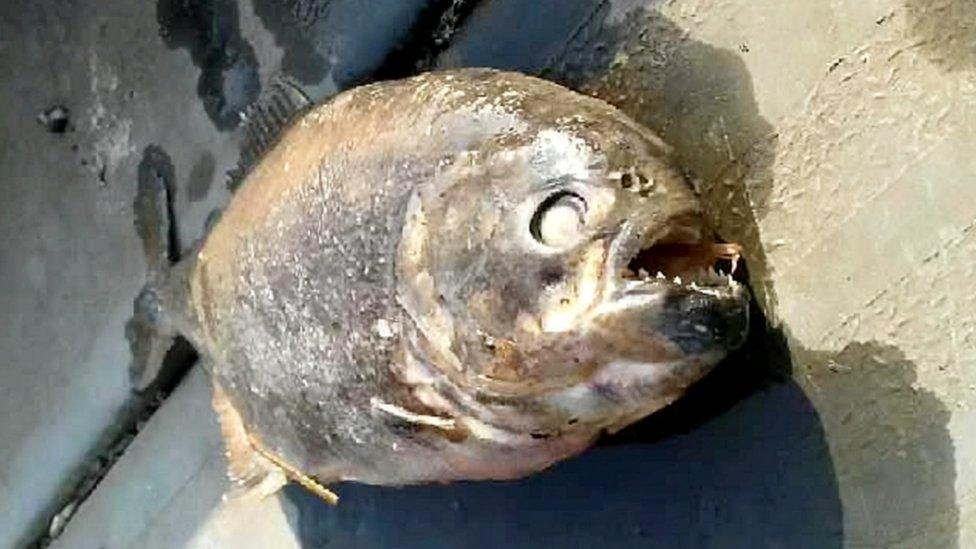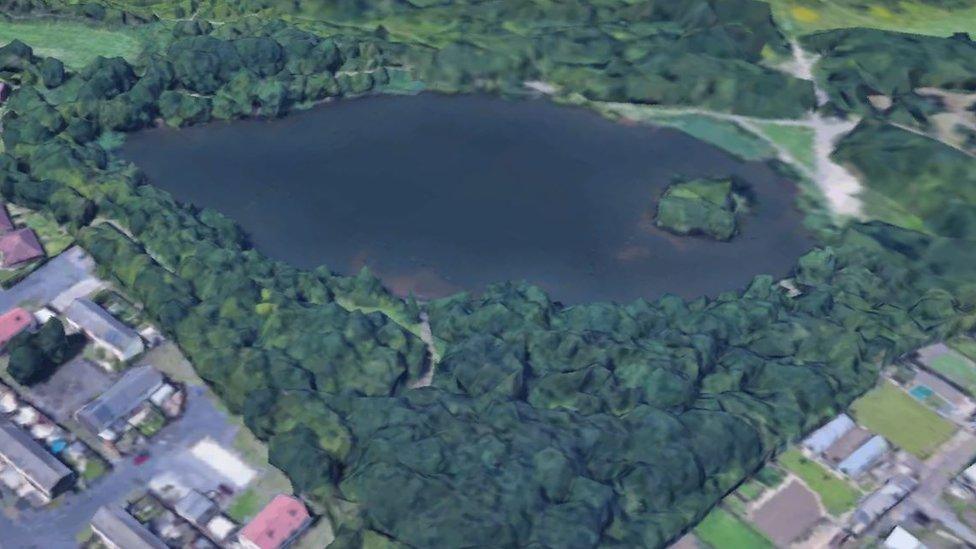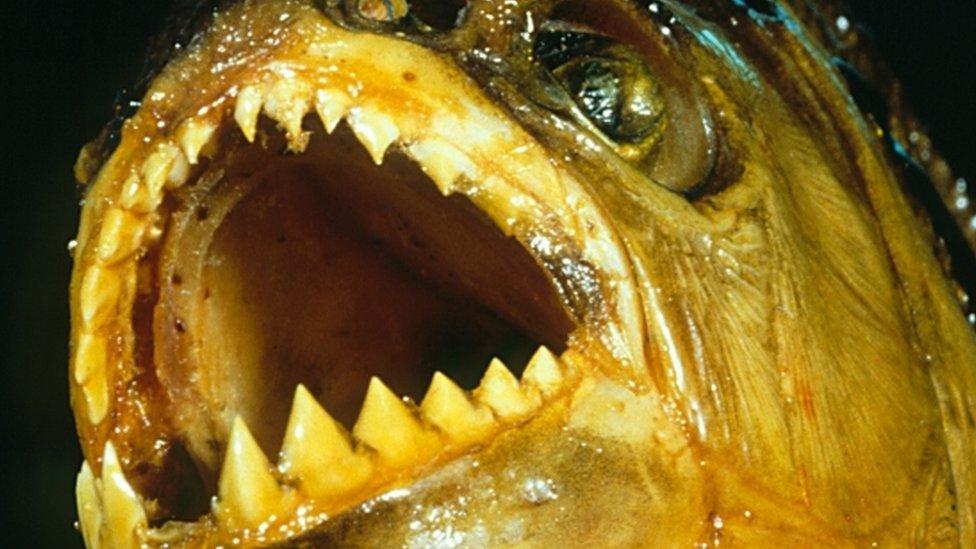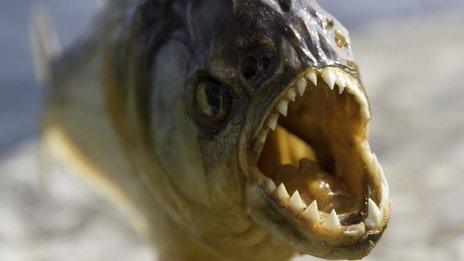'Piranhas' found in Doncaster fishing lake
- Published

The fish is being examined to determine its species
Tests are being carried out on two suspected piranhas found dead in a Yorkshire fishing lake.
The razor-toothed fish were found by local anglers at Martinwells Lake at Edlington, near Doncaster, a popular walking and fishing spot.
Experts said it was virtually impossible for piranhas to survive in cold English open water.
Doncaster Council, which owns the lake, said the fish may have been pets that had been dumped in the water.
A spokesman for the authority said the dead fish have been taken for examination.
Lisa Holmes, from Doncaster, who was at the lake - known locally as the Brick Pond - with partner Davey White, said she was shocked to find the fearsome predator on Sunday.
"My partner is a fisherman and was looking around the edge of the lake when he suddenly spotted this fish floating near one of the pegs [fishing platform]," she said.
"But then we started looking at it more closely and saw the teeth we realised it was a piranha."

The razor-toothed fish were found at Martinwells Lake in Doncaster
Gill Gillies, assistant director of environment at Doncaster Council, said: "Given the natural habitat of piranhas, it is highly unlikely that the fish were alive at any time in the lake.
"We assume that these were pets that were placed in the lake, something that we would strongly discourage people from doing."
The fish are now being tested by the Environment Agency.
A spokesman said: "Piranhas are not native to England and do not belong in our rivers and lakes.
"These fish do not easily survive or feed at temperatures below 10C and readily succumb to the cold of northern winters."

'They will eat almost anything'

The piranha will eat almost anything when hungry, BBC Science and Environment reports
Piranhas are now only found in freshwater areas in South America, with some 20 different species found in the Amazon.
Some piranhas have been found in other parts of the world but these are believed to be pets released into waterways.
Piranhas do have very sharp teeth and powerful jaws, with a study in 2012, external indicating the black piranha has the strongest bite found in a living fish.
They will eat almost anything when hungry - and there have been fatal attacks on humans, including a six-year-old girl in Brazil.
They can be eaten: In some parts of South America they are quite popular.
Source: BBC Science/Environment

Follow BBC Yorkshire on Facebook, external, Twitter, external and Instagram, external. Send your story ideas to yorkslincs.news@bbc.co.uk, external.
- Published19 October 2018
